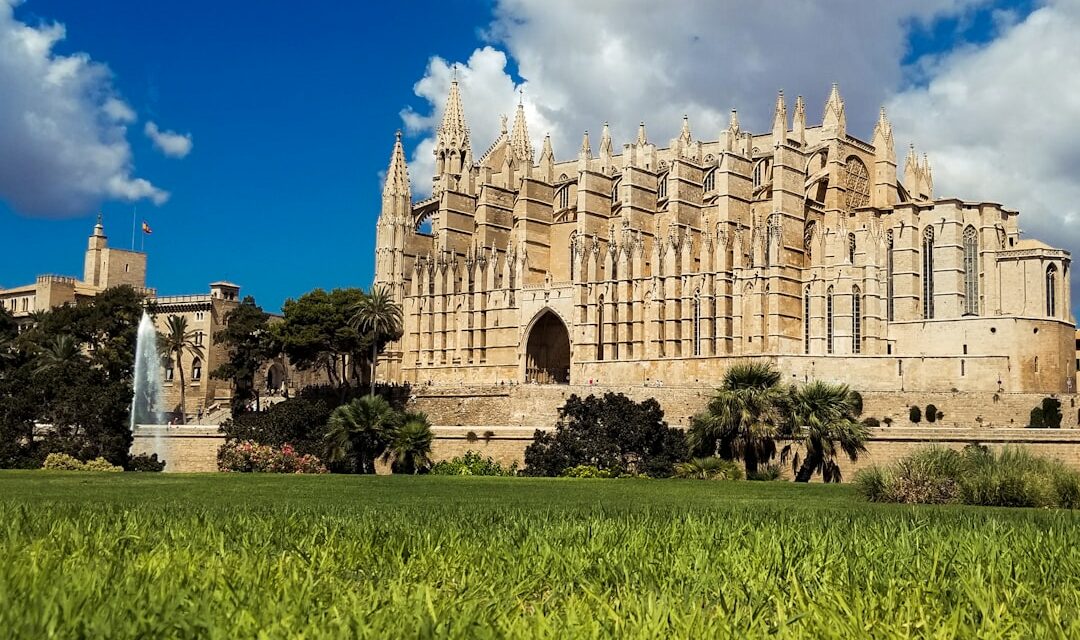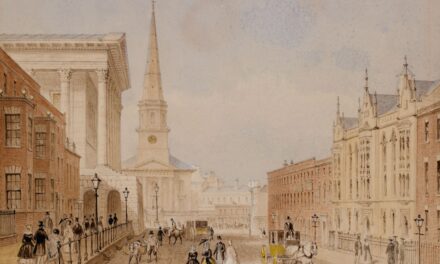Gothic art emerged in 12th-century France and rapidly disseminated across Europe. This artistic style developed as a successor to the preceding Romanesque period. Renaissance artists initially employed the term “Gothic” pejoratively, deeming it barbaric and unsophisticated.
However, subsequent generations have acknowledged Gothic art as a significant and influential epoch in art history. The advent of Gothic art was intrinsically linked to the construction of Gothic cathedrals, distinguished by their lofty heights, pointed arches and expansive stained glass windows. These ecclesiastical structures symbolised the Church’s power and affluence, with their artistic embellishments reflecting this magnificence.
The burgeoning urbanisation and trade in Europe also influenced Gothic art, fostering an increased demand for artistic works and craftsmanship.
Summary
- Gothic art originated in the 12th century in France and spread throughout Europe.
- Characteristics of Gothic art include intricate and detailed designs, pointed arches, and stained glass windows.
- Gothic architecture is known for its tall spires, flying buttresses, and ribbed vaults.
- Gothic sculpture often depicted religious figures and was used to adorn cathedrals and churches.
- Gothic painting focused on religious themes and used vibrant colours and intricate details.
- Gothic art had a significant influence on later art movements, such as the Renaissance.
- The legacy of Gothic art can be seen in the many cathedrals and churches that still stand today, as well as in the continued use of Gothic motifs in art and architecture.
Characteristics of Gothic Art
Architecture and Light
The large stained glass windows of Gothic cathedrals allowed for an influx of natural light, creating a sense of ethereal beauty within the space.
Sculpture and Emotion
In terms of sculpture, Gothic art is known for its naturalistic and emotive depictions of figures. Sculptures from this period often depicted religious scenes and figures with a sense of movement and expression, capturing the drama and emotion of the stories they portrayed.
Detail and Craftsmanship
Additionally, Gothic sculpture often featured intricate detailing and delicate carving, showcasing the skill and craftsmanship of the artists.
Gothic Architecture

Gothic architecture is perhaps the most iconic aspect of Gothic art. Characterised by its pointed arches, ribbed vaults, and flying buttresses, Gothic architecture allowed for the construction of larger and more elaborate buildings than ever before. The use of these architectural elements created a sense of upward movement, drawing the eye towards the heavens and creating a feeling of transcendence.
One of the most famous examples of Gothic architecture is the Notre-Dame Cathedral in Paris, with its iconic rose windows and towering spires. The cathedral’s construction began in the 12th century and continued for over 200 years, showcasing the dedication and skill of the craftsmen who built it. The Gothic style also spread to other types of buildings, such as castles, palaces, and town halls, leaving a lasting impact on the architectural landscape of Europe.
Gothic Sculpture
Gothic sculpture is known for its naturalistic and emotive depictions of figures, often portraying religious scenes and figures with a sense of movement and expression. This naturalism was a departure from the more stylised and rigid figures of the Romanesque period, reflecting a shift towards a more humanistic approach to art. One of the most famous examples of Gothic sculpture is the “Pietà” by Michelangelo, which depicts the body of Jesus on the lap of his mother Mary after the Crucifixion.
The sculpture is renowned for its emotional intensity and lifelike portrayal of the human form, showcasing the influence of Gothic art on later Renaissance artists.
Gothic Painting
Gothic painting was closely tied to the architecture and sculpture of the period, often adorning the walls and ceilings of churches and cathedrals. One of the most famous examples of Gothic painting is the frescoes in the Sistine Chapel, painted by artists such as Michelangelo and Botticelli. These frescoes depicted religious scenes with a sense of drama and emotion, reflecting the influence of Gothic art on later Renaissance painting.
Gothic painting also saw the development of new techniques, such as the use of perspective and foreshortening to create a sense of depth and realism in the artwork. This attention to detail and naturalism laid the groundwork for the innovations of later Renaissance artists, who built upon these techniques to create some of the most iconic works of art in history.
The Influence of Gothic Art

The Evolution of Architecture
The naturalistic and emotive depictions found in Gothic sculpture influenced later artists to explore new ways of portraying the human form, leading to the development of new techniques and styles.
A Lasting Impact on Spirituality
Gothic art also had a lasting impact on religious devotion and spirituality in Europe. The grandeur and beauty of Gothic cathedrals inspired awe and reverence in those who entered them, creating a sense of transcendence and connection to the divine.
A Legacy That Endures
This influence can still be seen today in the way that we approach and appreciate religious art and architecture.
The Legacy of Gothic Art
The legacy of Gothic art can be seen in the lasting impact it has had on art and architecture throughout history. Its emphasis on verticality and light laid the groundwork for new innovations in architecture, leading to the construction of some of the most iconic buildings in Europe. The naturalistic and emotive depictions found in Gothic sculpture influenced later artists to explore new ways of portraying the human form, leading to the development of new techniques and styles that continue to influence artists today.
Gothic art also had a lasting impact on religious devotion and spirituality in Europe. The grandeur and beauty of Gothic cathedrals inspired awe and reverence in those who entered them, creating a sense of transcendence and connection to the divine that continues to influence religious art and architecture today. Overall, the legacy of Gothic art can be seen in its enduring influence on art, architecture, and spirituality throughout history.
If you are interested in exploring different art movements, you may want to read about Cubism. This avant-garde movement, which originated in the early 20th century, is known for its geometric shapes and fragmented forms. To learn more about Cubism and its impact on the art world, check out this article on Thinkofart.com.
FAQs
What is Gothic Art?
Gothic art refers to the art and architecture produced during the Gothic period in Europe, which lasted from the 12th to the 16th century. It is characterized by its use of pointed arches, ribbed vaults, and flying buttresses in architecture, as well as intricate and detailed sculptures and stained glass windows.
What are the key characteristics of Gothic Art?
Key characteristics of Gothic art include the use of pointed arches, ribbed vaults, and flying buttresses in architecture, as well as the emphasis on verticality and light. In terms of sculpture and painting, Gothic art is known for its intricate and detailed designs, often depicting religious themes.
What are some famous examples of Gothic Art?
Some famous examples of Gothic art include the Notre-Dame Cathedral in Paris, the Chartres Cathedral in France, and the Westminster Abbey in London. These buildings showcase the intricate architectural details and stunning stained glass windows that are characteristic of Gothic art.
What was the significance of Gothic Art?
Gothic art was significant for its role in the development of architecture and the visual arts during the medieval period. It also played a crucial role in the expression of religious beliefs and the glorification of God through its elaborate designs and decorations.
How did Gothic Art influence later art movements?
Gothic art had a significant influence on later art movements, particularly the Renaissance and the Baroque periods. Its emphasis on naturalism, light, and space, as well as its intricate detailing, had a lasting impact on the development of Western art.




